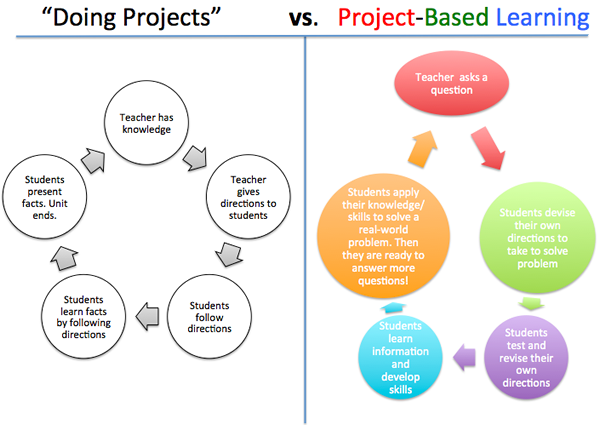PBL Design Considerations
Practically, for a teacher it means designing a number of activities for the students to pursue in order to solve or answer a question. The project activities culminate in a ‘product’, usually a public presentation of some type: a poster, a Power Point presentation or a product, etc. In order to do this, a number of design issues need to be considered. The diagram on the right illustrates this.
- Identify the objectives/standards for the section of work that needs to be met by your project design and by the ‘product’ the students will make.
- Create, or use the students to create, a complex open-ended question that engages the students’ interest, curiosity and whose answer is the ‘drive’ for student activity.
- Plan and alert the students on how their investigations will be assessed. If the product is to be marked, for example, allow the students to know the marking criteria before they start.
- Provide a list of activities that are required in order to answer the ‘driving’ question and create the ‘product’.
- Be a facilitator, rather than a traditional teacher. Resist the temptation to answer the students’ questions. Rather point them in the direction where an answer can be found. Manage the process to ensure the project stays on track and to purpose.
Information & Communication Technology (ICT) can support PBL. Electronic presentation tools will also be useful for report backs. Electronic probes could be used to collect scientific data. Cell phones and cameras can be used to collect still and video footage. The quest by the students to answer the question and demonstrate real understanding must be the paramount outcome.
Also notice how PBL is different from traditional group work by studying the diagram below.
